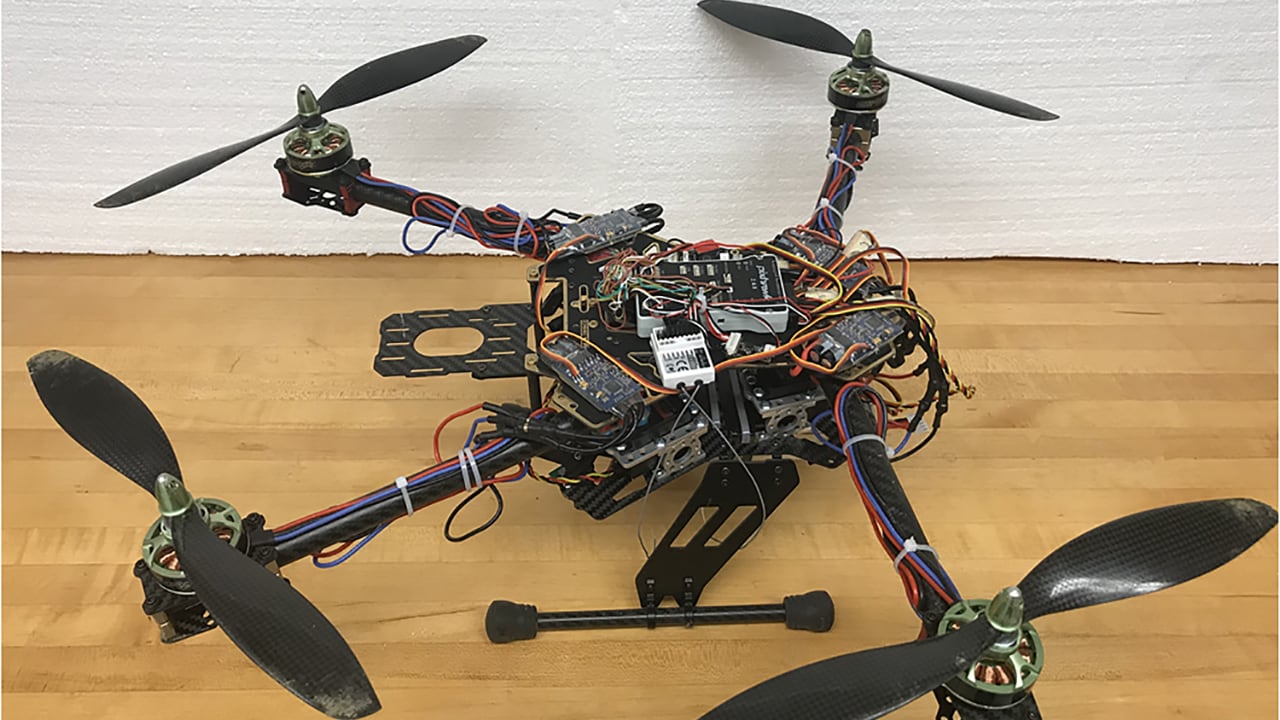
Flying drones on windy days can be challenging, if not impossible. But Purdue Polytechnic’s Xiumin Diao might have the solution.
 The fixed-arm design of most drones makes them prone to unstable flight in windy conditions. Diao, assistant professor of engineering technology, has come up with a patented design for unmanned aerial vehicles that works in windy conditions, is more energy-efficient and can handle a larger payload.
The fixed-arm design of most drones makes them prone to unstable flight in windy conditions. Diao, assistant professor of engineering technology, has come up with a patented design for unmanned aerial vehicles that works in windy conditions, is more energy-efficient and can handle a larger payload.
“Our drone design was inspired by the wings and flight patterns of insects,” said Diao. “We created a drone design with automatic folding arms that can make in-flight adjustments.”
The new design provides drones with improved stability in windy conditions because the folding arms can move and change the center of gravity of the device during flight, he said. The design also makes drones more energy efficient because the movable-arm technology allows for the use of the full range of rotor thrust.
Search-and-rescue operations might also be improved, Diao said, because drones developed with the new design will be able to more effectively navigate the air conditions in ravaged areas and morph by moving the arms to go through narrow spaces.
See the full Purdue Research Foundation article.
Additional information:
- Up in arms: Insect-inspired arm technology aims to improve drones (Purdue Research Foundation)
- This drone can fly in windy conditions (Defence Aviation Post)
